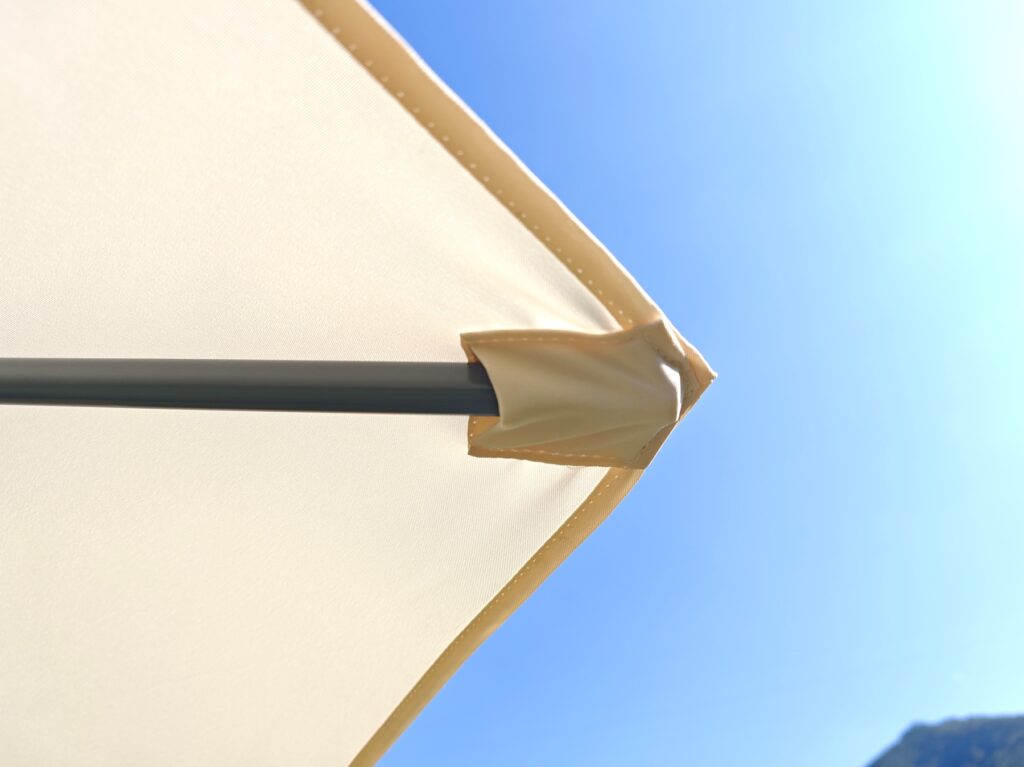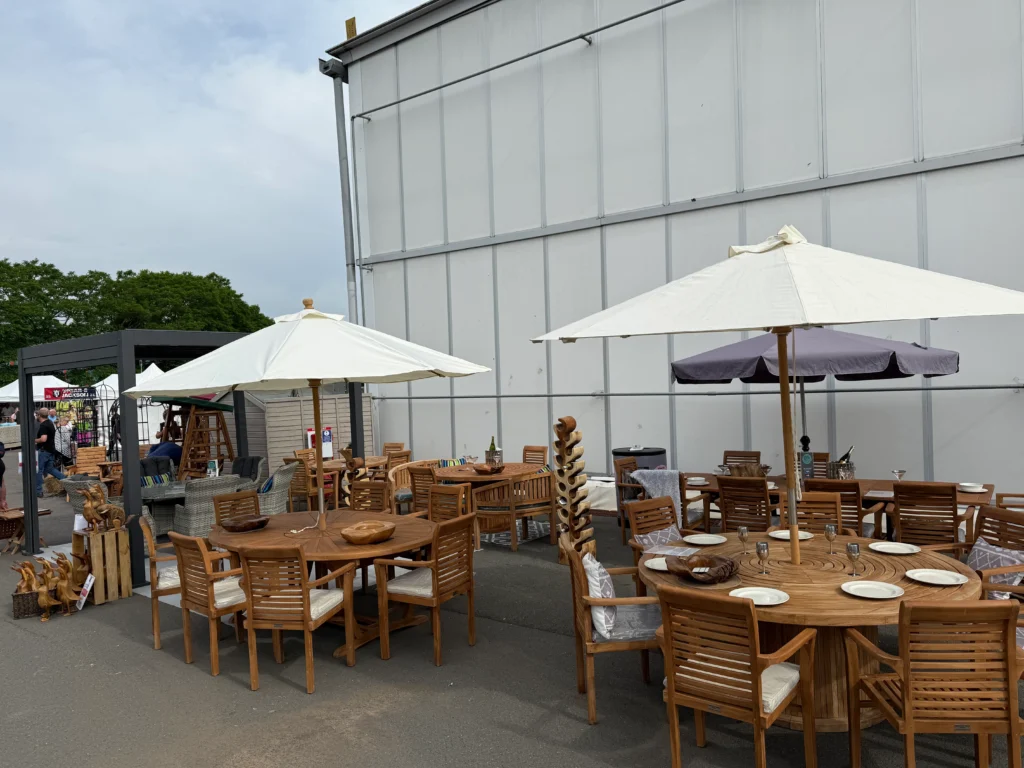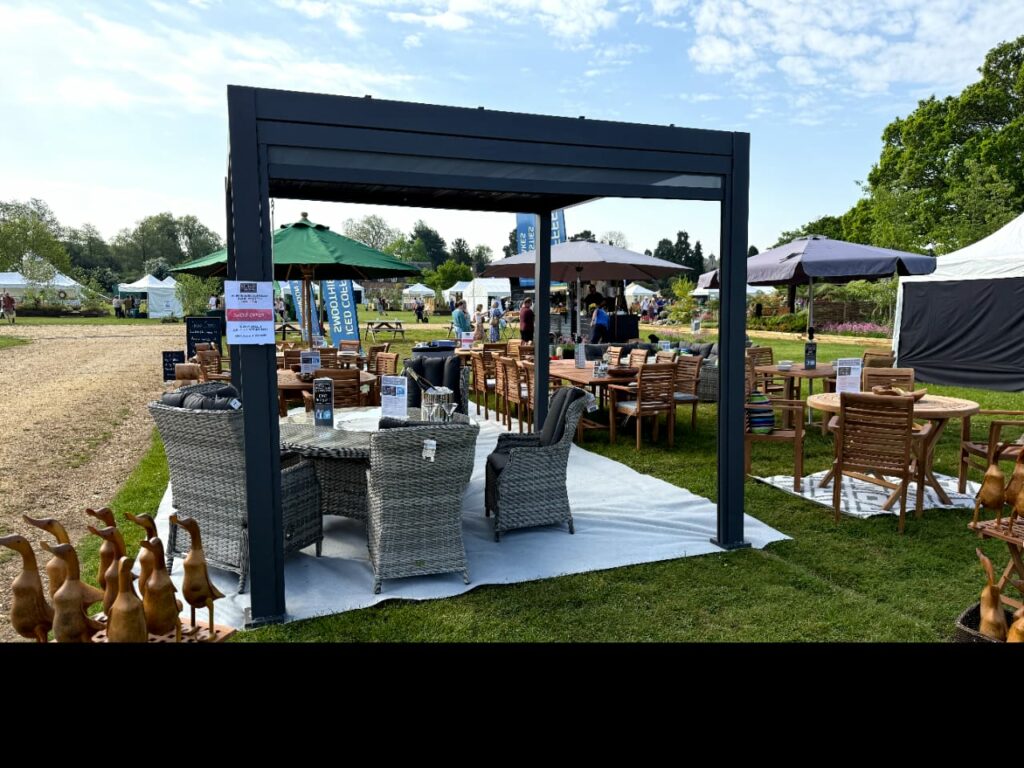Finding the right shade for your outdoor space can make all the difference, and aluminum pergolas are quickly becoming a popular solution. Stylish, durable, and functional, these pergolas are transforming backyards and patios into beautiful, shaded retreats.
Aluminum pergolas work in all kinds of spaces, from cozy decks to large gardens. They offer a sleek, modern alternative to traditional wooden gazebos, combining solid shade with a fresh, contemporary look. In this guide, we’ll explore how these pergolas have evolved, the exciting design options available, and what you can expect during installation. Whether you’re dreaming of a relaxing getaway or an entertainment hub, an aluminum pergola could be the perfect fit.
The Evolution of Garden Shade Structures
From basic umbrellas to elaborate pavilions: A brief history
The quest for outdoor comfort has a rich history dating back to ancient civilizations. The Ancient Egyptians were pioneers in using fabric for shade, a technique they also applied to harness wind power for sailing boats as early as 3,500 BC. Native Americans, Mongolians, Tibetans, and Bedouins utilized animal hides or woven thread to create tent-like structures, providing shelter from the elements.
The industrial revolution marked a significant turning point in shade structure development. In 1825, the United States saw the invention of the circus tent, the first large canvas building. This innovation paved the way for more ambitious designs. The All-Russia Exhibition of 1896 showcased major technical achievements in structures featuring tensile steel frames by Nizhny Novgoroed.
However, it wasn’t until the 1950s that the potential of tensile architecture for large outdoor areas truly blossomed. The Sidney Myer Music Bowl in Melbourne, designed by Barry Patten in 1959, stands as an early example of lightweight tensile structures. Frei Otto, influenced by Patten’s work, popularized membrane structures in the 1970s with designs like the Tuwaiq Palace in Saudi Arabia and the roof of the Olympic Stadium in Munich.
The advent of synthetic fibers like PVC gave birth to the modern shade sail. Initially popular in Australia and South Africa for garden greenhouses, these materials soon found application in creating shade sails. Australia became a leader in architectural sail technology, with Brisbane’s Expo ’88 showcasing the possibilities of architectural shade to the world.
Why aluminum is transforming outdoor shade options
In recent years, aluminum pergolas have emerged as a game-changer in outdoor shade solutions. These structures offer a blend of style, durability, and functionality that’s revolutionizing backyard and patio designs. Unlike traditional wooden or steel structures, aluminum pergolas boast remarkable durability, resisting warping, rotting, and corrosion.
One of the key advantages of aluminum pergolas is their ability to withstand harsh weather conditions. Whether facing intense sunlight, heat, or occasional sandstorms, these structures are up to the task. Many models come with innovative features such as waterproof roofs, retractable blinds, and built-in lighting systems, enhancing both aesthetic appeal and functionality in various weather scenarios.
The design versatility of aluminum pergolas is another compelling reason for their growing popularity. They can be customized to match specific aesthetic preferences and functional requirements, offering a wide range of sizes, styles, and features. Many models include practical elements like built-in drainage systems and retracting blind options, allowing for greater control over sunlight and privacy in outdoor areas.
Aluminum pergolas serve as an excellent foundation for creating inviting outdoor entertaining areas. They provide a shaded retreat, making them ideal for hosting parties and outdoor events without the discomfort of intense sunshine. When attached to a house, a pergola acts as a transition area, guiding guests smoothly between indoor and outdoor spaces.
As homeowners increasingly seek to maximize their outdoor living spaces, aluminum pergolas offer a sophisticated yet practical solution. Their low maintenance requirements, environmental benefits, and ability to enhance property values make them a worthy investment for those looking to create comfortable and stylish outdoor havens.
Designing Your Perfect Outdoor Shade Haven
Creating an outdoor shade haven requires thoughtful consideration of various elements to ensure a harmonious blend of functionality and aesthetics. When designing your perfect outdoor space, it’s essential to consider the overall layout, size, and style that best suits your garden and personal preferences.
Pergola and gazebo styles for every garden aesthetic
The choice of pergola or gazebo style can significantly impact the overall look and feel of your garden. From traditional wooden structures to sleek metal designs, there’s a wide range of options to complement any garden aesthetic. For a rustic charm, consider using natural logs to craft a unique and earthy pergola. This style blends seamlessly with cottage-style gardens, creating a sense of natural beauty.
For those seeking a more modern touch, aluminum pergolas offer a contemporary look while providing durability and low maintenance. These structures can be customized with features such as retractable canopies, allowing for versatility in different weather conditions.
Size and shape: From intimate nooks to grand pavilions
The size and shape of your pergola or gazebo should be proportionate to your garden space. As a general rule, pergolas should occupy less than 25% of your garden’s total area to maintain balance. For smaller gardens, consider an arched pergola design, which can help prevent the structure from feeling too bulky while retaining height.
For those with larger spaces, grand pavilions or carousel pergolas can serve as striking focal points. These designs offer ample room for seating, dining, or entertainment areas, transforming your garden into an outdoor living space.
Integrating your shade structure with existing garden features
Integrating your pergola or gazebo with existing garden features is crucial for creating a cohesive outdoor space. Consider placing your structure near water features like ponds or fountains to create a tranquil retreat. Ensure the design and materials of your pergola complement these elements for a unified look.
Utilize your pergola to define different areas within your garden. For example, a corner pergola can enclose an outdoor kitchen or create a cozy reading nook. You can also use pergolas to create transitions between different garden sections, guiding visitors through your outdoor space.
To maximize the functionality of your shade haven, consider incorporating built-in features such as benches, swings, or tables. Built-in lighting systems can enhance the ambiance and extend the usability of your outdoor space into the evening hours.
Lastly, don’t forget the power of plants in integrating your pergola with the surrounding landscape. Choose climbing plants like clematis or wisteria to soften the structure’s lines and provide additional shade. Hanging planters and strategically placed potted plants can further blend your pergola with the natural environment, creating a lush and inviting outdoor retreat.
From Selection to Installation: Bringing Shade to Your Space
Professional installation vs. DIY shade structure projects
When it comes to installing an aluminum pergola, homeowners face a crucial decision: professional installation or DIY. Both options have their merits and drawbacks, and the choice depends on various factors such as skill level, time availability, and budget.
For those considering the DIY route, it’s essential to assess one’s comfort level with using basic tools like drills, saws, and levels. Aluminum pergola kits often come with detailed instructions, including written manuals and video guides, making the process more accessible for handy individuals. However, DIY installation requires careful planning, from unloading the pergola components to the final assembly steps.
The advantages of DIY installation include cost savings on labor and the satisfaction of completing the project oneself. It’s also an opportunity to enhance one’s construction skills and problem-solving abilities. However, DIY projects can be time-consuming, especially for first-timers, and there’s a risk of making mistakes that could compromise the structure’s integrity.
On the other hand, professional installation offers peace of mind and expertise. Skilled workers experienced in pergola assembly can ensure a correct and high-quality installation, including proper anchoring and foundation work. This option is particularly beneficial for those with limited time, complex customization needs, or when the pergola is part of a larger outdoor project.
Maintaining your aluminum shade solution
One of the key advantages of aluminum pergolas is their low maintenance requirements. Unlike wooden structures, aluminum pergolas don’t need painting, varnishing, or other intensive care. Regular cleaning with normal detergent and water is usually sufficient to keep the structure in good condition. It’s important to avoid using wire brushes or sharp objects during cleaning to prevent damage to the powder-coated finish.
For pergolas with retractable roofs or shading screens, maintenance is minimal. During winter, it’s advisable to retract the shading material into its protective box. For glass-roofed pergolas, occasional cleaning is all that’s needed, though removing heavy snow accumulation in winter is recommended to prevent overloading.
The built-in drainage system in many aluminum pergolas with LED lighting systems helps manage rainwater effectively, preventing water pooling on top when the structure is closed. This feature enhances the pergola’s durability and reduces maintenance needs.
For optimal care, a thorough cleaning twice a year is recommended – once in autumn to remove dead leaves and again before the summer season to prepare for use. Additional light cleanings throughout the year can help maintain the pergola’s appearance and functionality.
By choosing an aluminum pergola and following these simple maintenance guidelines, homeowners can enjoy a durable, stylish, and low-maintenance outdoor shade solution for years to come.
Investing in Your Outdoor Comfort
Cost comparison: Pergolas, gazebos, and other shade options
When considering outdoor shade structures, budget often plays a crucial role in decision-making. Pergolas and gazebos are popular choices, each offering unique benefits and price points. Generally, pergolas tend to be more budget-friendly than gazebos due to their simpler design and construction.
A basic pergola kit can range from a few hundred to a few thousand dollars, depending on size and materials. Wood pergolas are popular for their natural beauty but may require more maintenance and have a higher upfront cost compared to vinyl or aluminum options. On the other hand, a standard gazebo kit typically starts at a few thousand dollars and can exceed tens of thousands for larger or custom-built options.
For those on a tight budget, a simple wooden pergola or a pop-up gazebo can be purchased for several hundred pounds. However, for a more durable and long-lasting solution, a modern wood, steel, or aluminum pergola typically costs between £1,000 and £3,000.
It’s important to note that the size, complexity of design, and additional features can significantly impact the overall cost of both pergolas and gazebos. Larger structures with intricate detailing or custom features may require additional materials and labor, resulting in higher expenses.
Long-term value of durable aluminum structures
While the initial cost is an important factor, it’s crucial to consider the long-term value when investing in outdoor structures. Aluminum pergolas, in particular, offer exceptional durability and longevity, making them a wise investment for outdoor comfort.
A high-quality aluminum pergola with LED lighting system should last a minimum of 10 years while maintaining its appearance and functionality. The aluminum powder coating protects against color fading in the sun, and the material itself is rust-free and low-maintenance. This longevity translates to excellent value over time. For example, a £5000 high-quality aluminum pergola enjoyed for 10 years breaks down to about £40 a month – a reasonable price for enhancing outdoor living space.
Aluminum pergolas offer several benefits that contribute to their long-term value:
-
Durability: Aluminum retains its appearance and functionality even when subjected to harsh weather conditions.
-
Low maintenance: Unlike wooden structures, aluminum pergolas don’t require painting, varnishing, or intensive care.
-
Longevity: With regular annual maintenance, an aluminum pergola can last for decades.
-
Environmental impact: Aluminum is a recycled and recyclable material, making it an environmentally friendly choice.
When comparing materials, wooden and aluminum structures are often comparable in price initially. However, wooden pergolas typically require more maintenance and repair work, exceeding the total cost of aluminum in the long term. Steel or vinyl pergolas may be more budget-friendly upfront, but this is often reflected in the quality of the product and its longevity.
Investing in a durable aluminum pergola not only provides a comfortable outdoor space but also adds value to the home. Like a timeless piece of jewelry, a well-designed aluminum pergola becomes a lasting addition to the property, creating new comfortable spaces with modern, light aesthetic lines.
Wrapping It Up
Aluminum pergolas have emerged as a game-changer in outdoor living spaces, offering a blend of style, durability, and functionality. These versatile structures adapt to various settings, from small decks to expansive gardens, providing an elegant shelter that enhances any outdoor area. With their ability to withstand harsh weather conditions and low maintenance requirements, aluminum pergolas present a practical and long-lasting solution for creating comfortable outdoor havens.
As homeowners increasingly seek to maximize their outdoor living spaces, aluminum pergolas stand out as a worthy investment. Their design versatility, coupled with features like built-in lighting systems and retractable roofs, allows for customization to match specific aesthetic preferences and functional needs. By choosing an aluminum pergola, homeowners can create inviting outdoor retreats that not only enhance their property values but also provide years of enjoyment and comfort.












